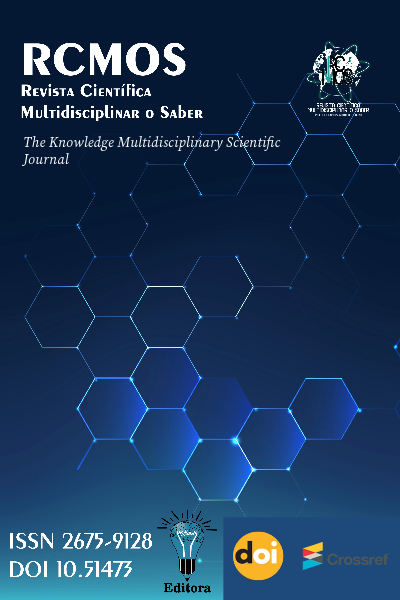Sports Training Periodization: Between Science and the Practice of the Personal Trainer
Sports Training Periodization: Between Science and the Practice of the Personal Trainer
DOI:
https://doi.org/10.51473/rcmos.v1i3.2021.1445Keywords:
Periodization of training, physical education, exercise planning, training methodologies, personal trainer.Abstract
The periodization of sports training is one of the pillars of physical education and physical preparation, representing a consolidated methodology to organize, plan and optimize training stimuli. Initially developed in the high performance sports context, this approach was also used in non -competitive environments, such as gyms and studios, meeting various goals such as health, aesthetics and quality of life. This article seeks to analyze the application of different periodization methodologies - classic, wave and contemporary - in multiple contexts, covering from athletes to recreational practitioners and clients with physical restrictions. The study articulates historical review, recent scientific evidence and professional practices, discussing how personal trainers can apply this knowledge in an adapted way. Throughout the analysis, the principles of biological individuality, progressive overload and stimuli variability, fundamental to promote effective and sustainable results, are emphasized. The article also addresses specific adaptations for the elderly, beginners and people with special needs, highlighting the relevance of scientifically based and humanized performance in the exercise of the profession.
Downloads
References
AMERICAN COLLEGE OF SPORTS MEDICINE. ACSM’s Guidelines for Exercise Testing and Prescription. 10. ed. Philadelphia: Wolters Kluwer, 2020.
BOMPA, T. O. Periodização: Teoria e Metodologia do Treinamento. São Paulo: Phorte, 1999.
CARVALHO, J.; MARQUES, E. Exercício físico e autoeficácia: implicações para a adesão em idosos. Revista Portuguesa de Ciências do Desporto, v. 17, n. 2, p. 125-138, 2017.
DISHMAN, R. K. et al. Physical activity adherence in health and disease: Determinants, strategies, and interventions. Behavioral Medicine, v. 39, n. 1, p. 55-63, 2013.
FLECK, S. J.; KRAEMER, W. J. Fundamentos do Treinamento de Força Muscular. 4. ed. Porto Alegre: Artmed, 2014.
FRAGALA, M. S. et al. Resistance training for older adults: Position statement from the National Strength and Conditioning Association. Journal of Strength and Conditioning Research, v. 33, n. 8, p. 2019-2052, 2019. DOI: https://doi.org/10.1519/JSC.0000000000003230
GIBALA, M. J.; MCGEE, S. L. Metabolic adaptations to short-term high-intensity interval training: a little pain for a lot of gain? Exercise and Sport Sciences Reviews, v. 36, n. 2, p. 58-63, 2008. DOI: https://doi.org/10.1097/JES.0b013e318168ec1f
GRGIC, J. et al. Effects of resistance training performed to repetition failure or non-failure on muscular strength and hypertrophy: a systematic review and meta-analysis. Journal of Sport Sciences, v. 36, n. 23, p. 2638-2645, 2017.
HACKETT, D. A. et al. The role of technology in resistance training periodization. Sports Medicine, v. 49, n. 1, p. 1-14, 2019.
ISSURIN, V. Block periodization versus traditional training theory: A review. Journal of Sports Medicine and Physical Fitness, v. 48, n. 1, p. 65-75, 2008.
ISSURIN, V. New horizons for the methodology and physiology of training periodization. Sports Medicine, v. 40, n. 3, p. 189-206, 2010. DOI: https://doi.org/10.2165/11319770-000000000-00000
KIELY, J. Periodization paradigms in the 21st century: Evidence-led or tradition-driven? International Journal of Sports Physiology and Performance, v. 7, n. 3, p. 242-250, 2012. DOI: https://doi.org/10.1123/ijspp.7.3.242
MATVEEV, L. P. Periodização do Treinamento Esportivo. Moscou: Progress Publishers, 1964.
POLIQUIN, C. Five principles of strength training. National Strength and Conditioning Association Journal, v. 10, n. 3, p. 34-39, 1988. DOI: https://doi.org/10.1519/0744-0049(1988)010<0034:FSTITE>2.3.CO;2
PRESTES, J. et al. Effects of linear and undulating periodized resistance training programs on measures of muscular fitness in previously trained men. Journal of Strength and Conditioning Research, v. 33, n. 3, p. 621-629, 2019.
RATAMESS, N. A. ACSM’s Foundations of Strength Training and Conditioning. Philadelphia: Wolters Kluwer, 2012.
RHEA, M. R. et al. A meta-analysis to determine the dose response for strength development. Medicine & Science in Sports & Exercise, v. 35, n. 3, p. 456-464, 2003. DOI: https://doi.org/10.1249/01.MSS.0000053727.63505.D4
RYAN, R. M.; DECI, E. L. Self-determination theory and the facilitation of intrinsic motivation, social development, and well-being. American Psychologist, v. 55, n. 1, p. 68-78, 2000. DOI: https://doi.org/10.1037//0003-066X.55.1.68
SELYE, H. The Stress of Life. New York: McGraw-Hill, 1950.
SCHOENFELD, B. J. Science and Development of Muscle Hypertrophy. Champaign: Human Kinetics, 2016. DOI: https://doi.org/10.5040/9781492595847
Downloads
Additional Files
Published
Issue
Section
Categories
License
Copyright (c) 2021 Silvana Aquino de Andrade (Autor)

This work is licensed under a Creative Commons Attribution 4.0 International License.












